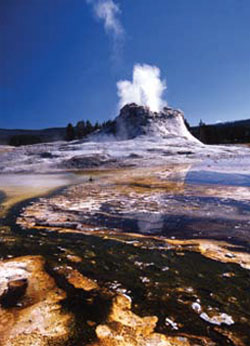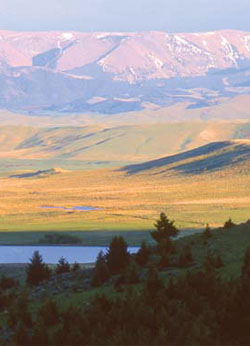Montana: Stories of the Land
Companion Website and Online Teacher's Guide
Chapter 1 - Montana: Where the Land Writes History
Chapter 1 - Montana: Where the Land Writes History
Chapter 2 - People of the Dog Days
Chapter 3 - From Dog Days to Horse Warriors
Chapter 4 - Newcomers Explore the Region
Chapter 5 - Beaver, Bison, and Black Robes
Chapter 6 - Montana's Gold and Silver Boom
Chapter 7 - Two Worlds Collide
Chapter 8 - Livestock and the Open Range
Chapter 9 - Railroads Link Montana to the Nation
Chapter 10 - Politics and the Copper Kings
Chapter 11 - The Early Reservation Years
Chapter 12 - Logging in the "High Lonesome"
Chapter 13 - Homesteading This Dry Land
Chapter 14 - Towns Have Lives, Too
Chapter 15 - Progressive Montana
Chapter 16 - Montana and World War I
Chapter 17 - Montanans on the Move
Chapter 18 - The Great Depression Transforms Montana
Chapter 19 - World War II in Montana
Chapter 20 - Building a New Montana
Chapter 21 - A People's Constitution
Chapter 22 - Living in a New Montana
Learning From Historical Documents
Letter from Helen Piper to "Friend," Helena, Montana October 28, 1935. Montana Governors records, 1889-1962. Manuscript Collection 35. [box 63 folder 1]. Montana Historical Society Research Center. Archives. Excerpted in Not In Precious Metals Alone: A Manuscript History of Montana (Helena, 1976): 201-202.
Context for Helen Piper's Letter:
After 1929, Montana's agricultural depression blended with the national financial crash, and the low prices, high unemployment, and hard times continued. Because state government employed many people, Helena escaped the worst of the Depression. Instead, that city's disaster was natural in origin. From October 3, 1935, to February 22, 1936, over 700 earthquakes shook Helena. Although the majority were only weak tremors, a quake of major proportions occurred on October 18. Many buildings were severely damaged and hundreds of residents were forced into the streets to sleep in automobiles or hastily constructed emergency shelters. Fortunately, the loss of life was minimal. On October 28, just as the city was beginning to return to normal, Montana Deaconess School principal Helen Piper reported the experiences at the school to the institution's friends. Ironically, two days later an equally violent quake again shook the city and did even more damage.
About Primary Sources:
Letters, diary entries, census records, newspapers, and photographs are all examples of "primary sources," material created at a particular moment in the past that has survived into the present. Primary sources can provide clues to the past. They are our windows into an earlier time. The Montana Historical Society contains thousands of primary sources. In the 1970s, archivists collected just a few snippets into a book, which they called Not In Precious Metals Alone: A Manuscript History of Montana. The above sample from that book relates directly to this chapter.


